 W
WThe Andean preceramic refers to the early period of human occupation in the Andean area of South America that preceded the introduction of ceramics. This period is also called pre-ceramic or aceramic.
 W
WEl Abra is the name given to an extensive archeological site, located in the valley of the same name. El Abra is situated in the east of the municipality Zipaquirá extending to the westernmost part of Tocancipá in the department of Cundinamarca, Colombia. The several hundred metres long series of rock shelters is in the north of the Bogotá savanna on the Altiplano Cundiboyacense, Eastern Ranges of the Colombian Andes at an altitude of 2,570 metres (8,430 ft). The rock shelter and cave system is one of the first evidences of human settlement in the Americas, dated at 12,400 ± 160 years BP. The site was used by the hunter-gatherers of the Late Pleistocene epoch.
 W
WAguazuque is a pre-Columbian archaeological site located in the western part of the municipality Soacha, close to the municipalities Mosquera and San Antonio del Tequendama in Cundinamarca, Colombia. It exists of evidences of human settlement of hunter-gatherers and in the ultimate phase primitive farmers. The site is situated on the Bogotá savanna, the relatively flat highland of the Altiplano Cundiboyacense close to the present-day course of the Bogotá River at an altitude of 2,600 metres (8,500 ft) above sea level. Aguazuque is just north of another Andean preceramic archaeological site; the rock shelter Tequendama and a few kilometres south of Lake Herrera. The artefacts found mostly belong to the preceramic period, and have been dated to 5025 to 2725 BP. Thus, the younger finds also pertain to the later ceramic Herrera Period. There were some difficulties in dating of the uppermost layer due to modern agricultural activity in the area; the sediments of the shallower parts were disturbed.
 W
WAncon is located in the north of the Bay of Ancon, in the Ancón District, on the central coast of Peru. It is one of the most important centers of the Peruvian archeology and features a vast necropolis of the pre-Hispanic era, with countless funerary sites. Permanent occupation in Ancon is documented throughout all periods of Andean history. The oldest evidence of human occupation dates back 10,000 years ago to the preceramic period.
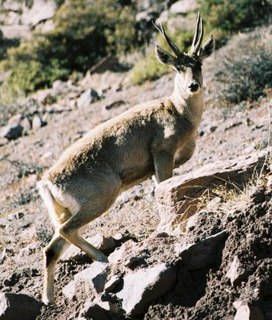 W
WAsana is an archaeological site by the Asana River, a tributary of the Osmore River, in the south-central Andes of southern Peru. The site is situated at an elevation of 3,430 metres (11,250 ft), with land use documented from 3,000–4,800 metres (9,800–15,700 ft). Asana was occupied over the course of 8,000 years; though the inhabitants were initially mobile foragers, long term habitation was marked at a later phase by residential architecture.
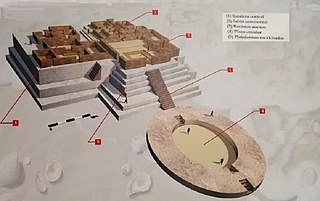 W
WAspero is a well-studied Late Preceramic site of the ancient Norte Chico civilization, located at the mouth of the Supe river on the north-central Peruvian coast. The site covers an area of approximately 35 acres and is made up of two large platform mounds, Huaca de los Sacrificios and Huaca de los Idolos, along with 15 other smaller mounds.
 W
WBandurria is a large archaeological site on the Huaura River in Peru going back to 4,000 BC. It is located about 3 km south of the city of Huacho, in Huacho District, Huaura Province, Lima Region. It corresponds chronologically to the period known as the 'Late Archaic' or 'Late preceramic' covering the years from about 4000 to 2000 BC.
 W
WCaral, or Caral-Chupacigarro, was a large settlement in the Supe Valley, near Supe, Barranca Province, Peru, some 200 kilometres (120 mi) north of Lima. Caral is the most ancient city of the Americas and a well-studied site of the Norte Chico civilization.
 W
WThe Casma–Sechin culture of Peru refers to the large concentration of pre-historic ruins in the valleys of the Casma River and its tributary the Sechin River and along the nearby coast of the Pacific Ocean. The ruins include major archaeological sites such as Sechin Bajo, Sechin Alto, Cerro Sechin, Mojeque, Chankillo, and Taukachi-Konkan, as well as other smaller sites. Most of these inland sites are found in the river valleys about 20 kilometres (12 mi) distant from the ocean. The seaside sites of Huaynuná and Las Haldas are found about 20 kilometres (12 mi) north and south of the mouth of the Casma River on the coast.
 W
WCerro Sechín is an archaeological site in Casma Province of Ancash Region in northern Peru. Dating to 1600 BC, the site was discovered by Peruvian archaeologists Julio C. Tello and Toribio Mejía Xesspe on July 1, 1937. Tello believed it was the capital of an entire culture, now known as the Casma/Sechin culture or Sechin complex. Notable features include megalithic architecture with carved figures in bas-relief, which graphically dramatize human sacrifices. Cerro Sechín is situated within the Sechin Alto Complex, as are Sechin Bajo, and Taukachi-Konkan. There is a small on-site museum. The slabs at Cerro Sechin may represent the central Andes' oldest known monumental sculpture.
 W
WChecua is a preceramic open area archaeological site in Nemocón, Cundinamarca, Colombia. The site is located 7 kilometres (4.3 mi) north of the town centre. At Checua, thousands of stone and bone tools, stone flakes and human remains have been found, indicating human occupation from around 8500 to 3000 years BP.
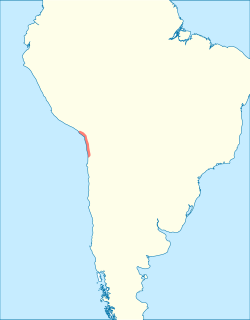 W
WThe Chinchorro culture of South America was a preceramic culture that lasted from 9,000 to 3,500 years BP. The people forming the Chinchorro culture were sedentary fishermen inhabiting the Pacific coastal region of current northern Chile and southern Peru. Presence of fresh water in the arid region on the coast facilitated human settlement in this area. The Chinchorro were famous for their detailed mummification and funerary practices. The area of the Chinchorro culture started to receive influences from the Andean Plateau around 4,000 BP, which led to the adoption of agriculture. Much later, it came under the influence of the Tiwanaku Empire.
 W
WThe Chinchorro mummies are mummified remains of individuals from the South American Chinchorro culture, found in what is now northern Chile. They are the oldest examples of artificially mummified human remains, having been buried up to two thousand years before the Egyptian mummies. Although the earliest mummy that has been found in Egypt dated around 3000 BCE, the oldest anthropogenically modified Chinchorro mummy dates from around 5050 BCE.
 W
WThe Chiribaya culture flourished near the coast of southern Peru and adjacent Chile from 700 CE until Spanish settlement in the late 16th century. The classic phase of the Chiribaya culture was from 1000 CE until 1360 CE. The Chiribaya culture consisted of both maritime settlements along 220 kilometres (140 mi) of the Pacific Ocean coast and agricultural settlements inland in valleys of the Osmore and Tambo rivers in Peru and the Lluta river and Azapa Valley in Chile.
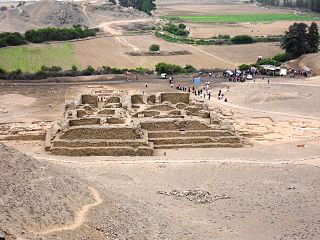 W
WEl Paraíso is the modern name of a Late Preceramic (3500–1800 BC) archaeological site located in the Chillón Valley on the central coast of Peru. The site is situated several kilometers north of Lima, the capital of Peru, in the San Martin de Porres District in the Province of Lima. El Paraíso is one of the largest settlements from this period, encompassing over 58 hectares of land.
 W
WGuitarrero Cave is located in the Callejón de Huaylas valley in Yungay Province, in the Ancash region of Peru. The cave stands 50 m (160 ft) above the Santa River and 2,580 m (8,460 ft) meters above sea level.
 W
WLake Herrera is a small lake located at 5 kilometres (3.1 mi) from the urban centre of Mosquera and about 20 kilometres (12 mi) west of the capital Bogotá in Cundinamarca, Colombia. The Andean lake has made its name in the Herrera Period, the period in the history of central Colombia before the Muisca Period, after archaeologist Sylvia Broadbent excavated ceramics around Lake Herrera in 1971.
 W
WHuaca Prieta is the site of a prehistoric settlement beside the Pacific Ocean in the Chicama Valley , just north of Trujillo, La Libertad Province, Peru. It is a part of the El Brujo Archaeological Complex, which also includes Moche (culture) sites.
 W
WIsla del Sol is an island in the southern part of Lake Titicaca. It is part of Bolivia, and specifically part of the La Paz Department. Geographically, the terrain is harsh; it is a rocky, hilly island with many eucalyptus trees. There are no motor vehicles or paved roads on the island. The main economic activity of the approximately 800 families on the island is farming, with fishing and tourism augmenting the subsistence economy. Of the several villages, Yumani and Challapampa are the largest.
 W
WJisk'a Iru Muqu is a pre-Columbian archaeological site 54 kilometers (34 mi) south-east of Puno, Peru. The site lies in the mountains at elevation 4,115 meters (13,500 feet), in the Aymara community of Jachacachi, adjacent to the Ilave River drainage, of the Lake Titicaca Basin, Peru. Occupation of Jisk'a Iru Muqu spans from the Late Archaic to the Formative.
 W
WKotosh is an archaeological site near the town of Huánuco, Peru, consisting of a series of buildings comprising six periods of continuous occupation.
 W
WThe archaeological site of La Galgada in Peru is an example of a ceremonial monument built within the Kotosh Religious Tradition during the preceramic, or Late Archaic period of Andean history. The site itself is located on the eastern bank of the Tablachaca River, the principal tributary of the Santa River. The site is located in the Tauca District of what is now the Pallasca Province of the Republic of Peru.
 W
WLas Haldas or Las Aldas is a large archaeological complex from before and during the initial ceramic period of Peru. Las Haldas is located on the Pacific coast approximately 300 kilometres (190 mi) north of Lima and about 20 kilometres (12 mi) south of the Casma river valley, noted for the extensive ruins of the Casma/Sechin culture. For most of its history Las Haldas, a coastal community, coexisted with the inland agricultural communities in the Casma River Valley.
 W
WThe Las Vegas culture is the name given to many Archaic settlements which flourished between 8000 BCE and 4600 BCE.(10,000 to 6,600 BP) near the coast of present-day Ecuador. The name comes from the location of the most prominent settlement, Site No. 80, near the Las Vegas River and now within the city of Santa Elena. The Las Vegas culture represents "an early, sedentary adjustment to an ecologically complex coastal environment."
 W
WLauricocha culture is a sequence of preceramic cultural periods in Peru's history, spanning about 5,000 years from c. 8000 to 2500 BCE.
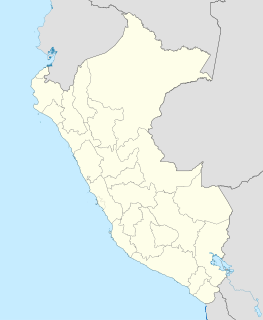 W
WNanchoc District is one of thirteen districts of San Miguel Province in the Cajamarca Region of Peru. In 2017, the district had an area of 359 square kilometres (139 sq mi) and a population of 1,368. The capital of the district is the town of Nanchoc which had a population of 332 in 2017. The Nanchoc River, a tributary of the Zaña River, bisects the district.
 W
WThe Caral Civilization was a complex pre-Columbian-era society that included as many as thirty major population centers in what is now the Norte Chico region of north-central coastal Peru. The civilization flourished between the fourth and second millennia BC, with the formation of the first city generally dated to around 3500 BC, at Huaricanga, in the Fortaleza area. It is from 3100 BC onward that large-scale human settlement and communal construction become clearly apparent, which lasted until a period of decline around 1800 BC. Since the early 21st century, it has been established as the oldest-known civilization in the Americas.
 W
WThe Paiján culture was an archaeological culture that emerged on the northern coast of Peru between 13,000 and 10,000 cal BP. It was first described by Peruvian archaeologist Rafael Larco Hoyle in the 1940s from the Pampa de los Fósiles site. Later research, mainly by French archaeologist Claude Chauchat, identified dozens of open air sites, which include camps, workshops and quarries.
 W
WSechin Bajo is a large archaeological site with ruins dating from 3500 BCE to 1300 BCE, making it not only one of the oldest centers of civilization in the Western Hemisphere, but also one of the oldest civilization centers on earth. Sechin Bajo is located in the valley of the Sechin River, about 12 kilometres (7.5 mi) from the Pacific Ocean and about 330 kilometres (210 mi) northwest of Lima, Peru. Sechin Bajo is one ruin among many located in close proximity to each other in the valleys of the Casma and Sechin Rivers.
 W
WSoro Mik'aya Patjxa is a high-altitude archaeological site located in the Ilave Basin in Peru, about 30 km (19 mi) west of the current shoreline of Lake Titicaca. Soro Mik'aya Patjxa was a seasonal residential site that was reused consistently by hunter-gatherers over a period of over a thousand years.
 W
WPuerto Supe, officially known as Supe Puerto, is a small harbor town located in the province of Barranca, in the Lima Provincias region, on the coast of Peru. It is located approximately 190 km north of Lima, and is part of the Supe Valley.
 W
WTequendama is a preceramic and ceramic archaeological site located southeast of Soacha, Cundinamarca, Colombia, a couple of kilometers east of Tequendama Falls. It consists of multiple evidences of late Pleistocene to middle Holocene population of the Bogotá savanna, the high plateau in the Colombian Andes. Tequendama was inhabited from around 11,000 years BP, and continuing into the prehistorical, Herrera and Muisca periods, making it the oldest site of Colombia, together with El Abra, located north of Zipaquirá. Younger evidences also from the Herrera Period have been found close to the site of Tequendama in Soacha, at the construction site of a new electrical plant. They are dated at around 900 BCE to 900 AD.
 W
WTibitó is the second-oldest dated archaeological site on the Altiplano Cundiboyacense, Colombia. The rock shelter is located in the municipality Tocancipá, Cundinamarca, Colombia, in the northern part of the Bogotá savanna. At Tibitó, bone and stone tools and carbon have been found. Bones from Haplomastodon, Cuvieronius, Cerdocyon and white tailed deer from the deepest human trace containing layer of the site is carbon dated to be 11,740 ± 110 years old. The oldest dated sediments are lacustrine clays from an ancient Pleistocene lake.
 W
WToquepala Caves are located near Toquepala mine, about 154 km (96 mi) from the city of Tacna, in the extreme southeast of Peru. They are notable for a number of rock paintings. The best known of them is the cave named Abrigo del Diablo.
 W
WVentarrón is the site of a 4,500-year-old temple with painted murals, which was excavated in Peru in 2007 near Chiclayo, in the Lambayeque region on the northern coast. The site was inhabited by the Early Cupisnique, Cupisnique, Chavin and Moche cultures.